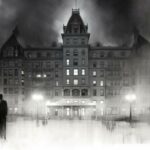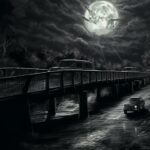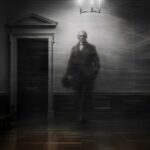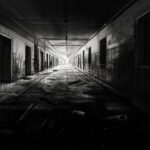Table of Contents
Fort Worth, Texas, harbors a chilling past, with haunted locales that intrigue both skeptics and believers alike. Visitors seeking thrills can explore the city’s eerie history through the shadowy corners and creaky floors of its most notorious sites. These spectral hotspots promise to cast a shiver down the spine of even the most daring ghost hunters.
If you are doing any kind of paranormal investigation here, you might want to take a look at our ghost hunting equipment list. Locations like this get a reputation because they are high activity and you don’t need much to see for yourself.
Miss Molly’s Hotel
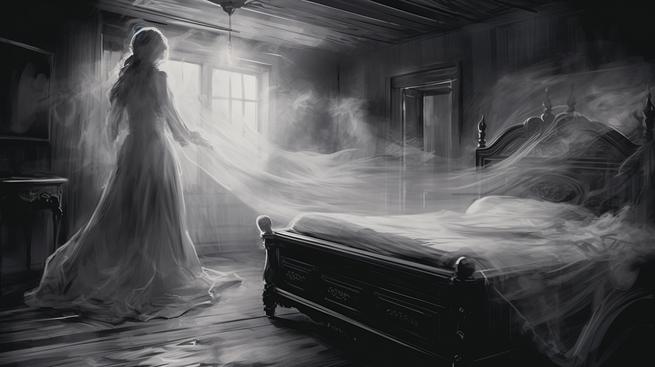
Nestled in the heart of Fort Worth, Texas, Miss Molly’s Hotel stands as a beacon for those fascinated by the supernatural. Its walls, steeped in history, tell tales of a bygone era when it served as a speakeasy, boarding house, and brothel. Today, it boasts the title of Fort Worth’s first bed and breakfast, but its guests often seek more than a cozy night’s sleep; they come for whispers of its haunted past.
The hotel’s notoriety as a paranormal hotspot didn’t arise from thin air. The Discovery Channel’s Ghost Lab featured Miss Molly’s, cementing its reputation as a place where spirits roam. The Texas Paranormal Research Team even combed through its rooms, armed with gadgets to detect the unseen, and left with tales of encounters that sent shivers down their spines.
At the core of the hotel’s spectral fame are its resident ghosts. The cowboy, a small child, and a woman, believed to be a former madam named Josie King, are the usual suspects behind the strange happenings. Rooms such as the Cattlemen and Cowboy-themed ones often become stages for the supernatural, as guests report everything from ghostly sit-downs on their beds to unexplained shaking in the dead of night.
Jake the Cowboy reigns as the hotel’s most famous ghost, often showing himself in full form. Paula Gowins, the manager who once doubted the hotel’s haunted whispers, had an encounter that turned her skepticism on its head. She saw Jake walk into a room and shut the door, only to find the room empty when she bravely investigated.
The “Mysterious Madam”, Josie King, supposedly oversees the hotel’s nocturnal activities, with sightings at the foot of beds at the witching hour. Her presence, a reminder of the hotel’s colorful history, adds a layer of intimacy to the hauntings, as she reportedly enjoys watching over sleeping guests.
Room 3 stands out as a hub of paranormal activity. Online testimonials from previous guests paint a picture of a room alive with spirits, where the dead don’t seem to rest. And then there’s the “Tipping Ghost”, a peculiar entity known for leaving change in freshly cleaned rooms, a habit that once drove a cleaning lady to quit.
The hotel’s history is a tapestry of pleasure and prohibition. Built in 1910 as The Palace Rooms, it morphed into The Oasis during the dry spell of Prohibition, later becoming The Gayatte Hotel, a brothel. After the red-light days dimmed, Miss Molly’s Hotel emerged, preserving the building’s history while turning a new page.
Visitors to Miss Molly’s Hotel are transported back in time, with rooms adorned in authentically western decor, complete with wooden stoves and old-fashioned bathtubs. Despite—or perhaps because of—its phantom residents, the hotel remains a popular spot for paranormal enthusiasts. It’s a place where the past lingers, eager to make its presence known to those who dare to listen.
I stayed in Room 3 at Miss Molly’s Hotel, and man, I swear I felt someone sit on the edge of my bed at night, but when I turned on the light, no one was there! It was totally spooky, like the ghosts from its old brothel days were still hangin’ around.
Thistle Hill
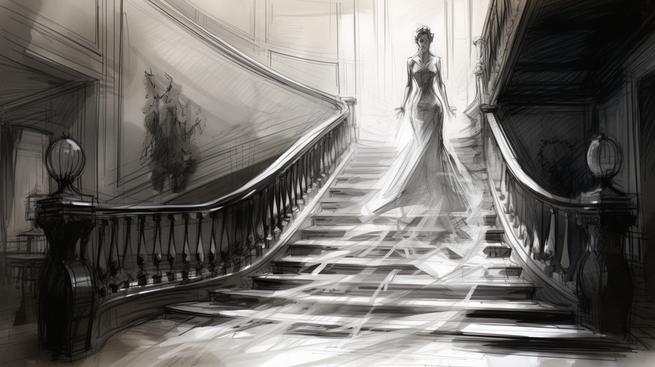
Thistle Hill, a Georgian Revival jewel perched at 1509 Pennsylvania Avenue in Fort Worth, Texas, harbors more than just a rich history; it’s a sanctuary where the past refuses to be forgotten. Designed by the esteemed architectural duo Sanguinet and Staats, the mansion was initially the love nest for Electra Waggoner Wharton, daughter of the affluent rancher and oilman William Thomas “Tom” Waggoner, and her husband, Albert Buckman Wharton. Although its days as a residence are long gone, whispers of its former inhabitants still echo through the halls, suggesting that some guests never checked out.
Crafted in the early 20th century, Thistle Hill stood as a testament to the Waggoner family’s cattle and oil fortunes. The mansion’s red brick façade, adorned with cast stone trim and white wooden flourishes, hides within its walls an opulent world of oak grand staircases, Tiffany windows, and eight fireplaces—pointers to the wealth that once flowed as freely as the oil on the Waggoner lands.
After the Whartons bid farewell to the mansion, moving to greener pastures on their sprawling ranch, Thistle Hill fell into the hands of Winfield Scott, a titan of cattle and real estate. His wife, Elizabeth, added her touch to the gardens, erecting a pergola and tea house that remain to this day, standing as silent witnesses to the glory days and the whispers of the past.
The mansion’s brush with oblivion was averted thanks to the Girl’s Service League of Fort Worth, which transformed it into a dormitory for underprivileged girls, and later, a committee dedicated to its preservation. Now a Recorded Texas Historic Landmark and part of the National Register of Historic Places, Thistle Hill serves as a venue for events that mask the murmurings of its spectral residents.
The renovation efforts in the 1970s stirred the pot, reawakening the dormant spirits. The apparitions—a woman in white gracing the grand staircase and a man in tennis attire, complete with a handlebar moustache—began to make their presence known. The third floor, supposedly sealed, hummed with music from another era, while footsteps and voices became part of the mansion’s new normal.
During a paranormal investigation, a ghost hunter’s sleep was interrupted by a dark, shapeless figure, which vanished into thin air, perhaps shy of the modern world’s glaring lights. A rocking chair, heavy with years, mysteriously found its way back to the ballroom, defying explanation. Such occurrences are now part of Thistle Hill’s charm, an integral thread in the tapestry of its haunting allure.
A bridesmaid at a wedding glimpsed a figure from yesteryear, a lady in period attire, who vanished as quickly as she appeared, leaving those left behind to wonder if they had brushed shoulders with a resident from the mansion’s storied past.
Today, Historic Fort Worth, Inc. holds the reins, ensuring that Thistle Hill remains not just a relic of grandeur but a living, breathing monument where history’s whispers are as loud as the clinking of glasses at a wedding reception. The mansion’s doors are open, inviting those with a taste for history and a curiosity for the unknown to step inside, where time stands still, and the echoes of yesteryear linger just beyond the veil.
I was just chilling at Thistle Hill when I saw this lady in an old-timey dress float down the stairs and then poof, she was gone! It was totally spooky, but kinda cool too.
The Stockyards Hotel
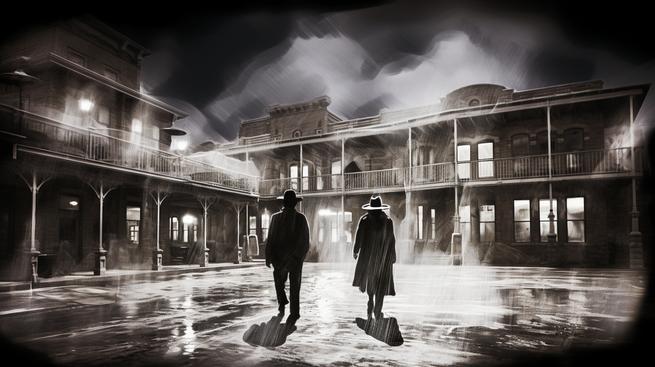
The Stockyards Hotel in Fort Worth, Texas, stands as a beacon of the Old West, its walls echoing with the footsteps of infamous guests and the whispers of ghostly encounters. Opening its doors in 1907, the hotel quickly became a magnet for cattle barons, oil tycoons, and legendary figures of the frontier.
One of the hotel’s most notorious claims to fame is its association with the outlaw duo, Bonnie and Clyde. The pair, known for their bank-robbing escapades, once sought refuge within the hotel’s walls, specifically in Suite 305. Today, guests and staff report strange occurrences in the very room that Bonnie and Clyde once occupied, with faucets turning on by themselves and a palpable sense of a lingering presence.
The hotel’s connection to the past goes beyond the infamous couple. Legends like Chuck Norris, Garth Brooks, George Strait, and Tanya Tucker have all laid their heads to rest in the Celebrity Suite, adding to the hotel’s star-studded history.
Despite the lack of ghostly attractions on its official website, a simple online search reveals a treasure trove of paranormal experiences. The second floor, in particular, seems to be a hotbed of supernatural activity. Guests recount eerie tales of unexplained noises, sudden chills, and the sensation of an unseen visitor joining them in bed.
The hotel’s haunted reputation extends to the tragic tale of a rodeo cowboy named C.D. “Junior” Colwell. His love story took a dark turn within the hotel’s confines, culminating in a murder-suicide attempt and Junior’s own death by his hand. Today, his spirit is said to roam the second floor, perhaps mistaking current guests for his lost love, Ada.
Adding to the spectral sightings are reports of prank calls coming to the front desk from an empty lobby and the jingle of spurs in quiet hallways. These mysterious occurrences are often attributed to the ghost of a former employee known as Jake, though historical records of such a person remain elusive.
The Stockyards Hotel carries the weight of its history with a dignified grace, its walls adorned with antiques and reminders of a bygone era. Guests seeking a brush with the paranormal are drawn to the Bonnie and Clyde room, eager to unlock the mysteries of the Great Depression’s most notorious bank robbers.
As a landmark of Fort Worth, the Stockyards Hotel invites visitors to step back in time and perhaps, if they’re lucky—or unlucky, depending on one’s view—experience an encounter with the echoes of its storied past.
I stayed at the Stockyards Hotel and, man, the second floor gave me the creeps—heard weird noises and felt like someone was watching me all night. Plus, the room where Bonnie and Clyde stayed? Faucets turned on by themselves—I got no sleep!
Scott Theatre
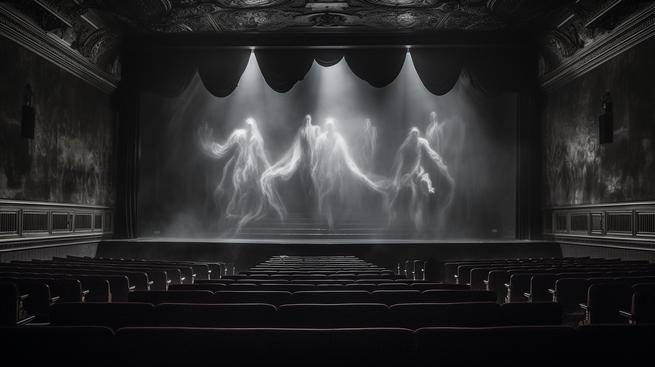
The Scott Theatre in Fort Worth, Texas, stands as a monument not just to the performing arts but to the supernatural as well. Constructed in 1966 with funds from the Scott Foundation, the 468-seat venue boasts a history that sends shivers down the spine. The theatre, a brainchild of the late William Edrington Scott, hosts more than just plays and performances; it reportedly plays host to restless spirits that refuse to leave the stage.
The founder, William Edrington Scott, passed away five years before the theatre’s completion, leaving behind a substantial $3,000,000 trust to cultivate Fort Worth’s Cultural District. Though Scott never saw the curtains rise in the theatre, some say he never left. His specter allegedly busies itself with keeping portraits straight, a telltale sign of his lingering presence. Patrons have reported hearing phantom footsteps and spontaneous bursts of unidentified laughter, suggesting that Scott still enjoys the shows from beyond the grave.
A more chilling tale is that of Kenneth Walker Yandle, whose life took a tragic turn in 1970. After a heartbreak, the stagehand turned actor met his end in the theatre’s prop room, taking his own life. Many believe that Yandle’s spirit remains, occasionally donning a brown suit and walking across the stage. Some even claim to hear his laughter echoing beneath the stage. The prop room, where Yandle’s life ended, has become a wellspring of paranormal activity, with objects inexplicably falling and tools starting on their own.
One harrowing encounter tells of a stagehand who felt enveloped by a sinister energy when he heard footsteps descending into the so-called dungeon of the theatre. As he investigated, objects began to topple off shelves, and a drill powered up without human intervention. The stagehand reportedly came face-to-face with Yandle’s ghost, marked by gouged eyes and a gaping mouth, before fainting from fright.
Despite these eerie occurrences, the Scott Theatre continues to shine a spotlight on the arts. The venue’s crown jewel is an iridescent, eight-foot chandelier that captivates visitors, along with a lobby mural paying homage to ancient Greek and Roman theatres.
The Scott Theatre remains a cornerstone of Fort Worth’s Cultural District, where visitors can catch a show and perhaps a glimpse of the otherworldly. As part of the Fort Worth Community Arts Center, it stands at the intersection of W. Lancaster Avenue and Gendy Street, waiting to tell its haunted tales to those who dare to listen.
Ghost City Tours takes pride in guiding the curious through Fort Worth’s haunted history, with the Scott Theatre featuring prominently in their ghostly narratives. Those eager to explore the paranormal side of Fort Worth can join these tours to learn more about the spirits that allegedly inhabit the historic venues of this Texan city.
I got the creeps when I heard about the Scott Theatre in Fort Worth, where it’s said the old founder’s ghost keeps the pictures straight and a heartbroken actor’s spirit still hangs around, making tools move and stuff. They even say you might catch a laugh or see a spooky figure if you’re brave enough to visit.
Arlington’s Cemetery Of Lost Infants
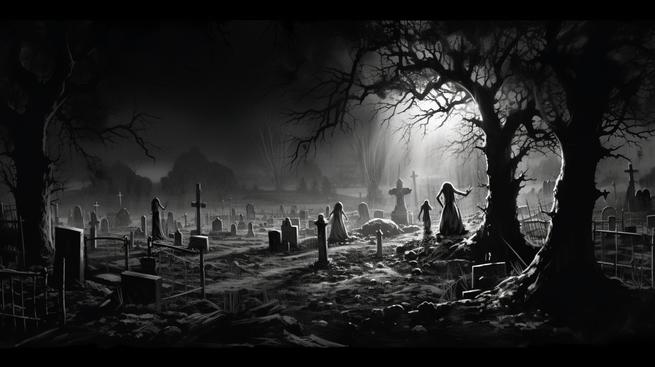
In the heart of Arlington, Texas, nestled on the fringes of the University of Texas Arlington campus within Doug Russell Park, lies a historical gem largely unknown to the bustling student body – the Lost Cemetery of Infants. Historian Lydia Brosowsky, during her rigorous academic pursuits, unearthed the poignant narrative of this silent sanctuary.
A century ago, the grounds served as the final resting place for dozens of unnamed children, their lives snuffed out before they could even be christened. The cemetery, however, is more than just a collection of graves; it’s a testament to second chances and societal defiance.
The cemetery is the last remnant of what was once the Berachah Industrial Home for the Redemption of Erring Girls, a refuge for those whom society had cast aside. JT Upchurch, a preacher, and his wife founded this haven with a vision to equip these marginalized women – particularly homeless and unwed mothers – with the skills necessary to forge a dignified existence.
This institution stood as a beacon of hope, a place where women could emerge from the shadows of scorn and step into the sunlight of self-sufficiency. Unfortunately, the shadow of tragedy loomed as many infants succumbed to the harsh clutches of childbirth, the ravages of the Spanish flu, or other unforgiving illnesses.
The graves, etched with the stark inscription “Infant” followed by a sequential number, bear silent witness to the lives lost and the pervasive grief of mothers robbed of their offspring. Yet, the simplicity of these markers belies the profound impact of the lives they commemorate.
The Berachah Home shuttered its doors in 1935, but whispers of its legacy linger. Visitors to the park often report a sense of unseen companionship among the trees. Some even leave toys at the graves, tokens that mysteriously migrate between markers, fueling local lore that the children’s spirits play amidst the oaks and elms.
Despite these eerie anecdotes, an aura of tranquility permeates the space. It’s a place that, against all odds, provided a ray of hope in a world shrouded in rejection. Many believe that the cemetery’s spectral residents harbor no malice, their laughter a testament to the home’s enduring legacy of love and compassion.
The Lost Cemetery of Infants stands as a unique chapter in Arlington’s history, a place where the echoes of the past reach out to the present, reminding us that every soul, no matter how small, can leave an indelible mark on the fabric of time.
I heard from folks around UTA that if you hang out by the old Cemetery of Lost Infants at dusk, you might feel a chill or hear the faint sound of giggles, like the ghostly babies are still playing there, long after the sun goes down. It’s kinda spooky, but also sorta sweet, you know?
Castle Of Heron
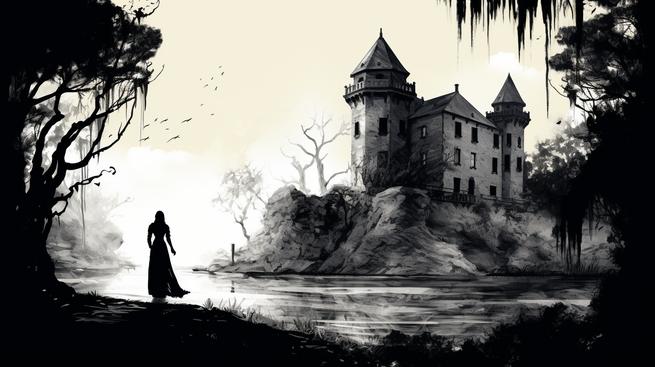
The Castle of Heron Bay in Fort Worth, Texas, stands as a testament to the city’s storied past, where whispers of the supernatural float on the wind like leaves in autumn. This imposing structure, with its European stone and ghostly legends, beckons the curious and the brave to explore its haunted history.
The tale of the Castle begins as a tragic love story in 1860, when a man constructed a stone farmhouse as a wedding gift for his betrothed. However, fate had a cruel twist in store. On their wedding day, he discovered his fiancée lifeless, drowned in the nearby Lake Worth. Her death, shrouded in mystery, remains unsolved to this day, leaving many to wonder whether it was a case of cold feet turned icy or a darker deed done.
In a strange turn of events, the grieving fiancé tied the knot with his late bride’s sister within a month. Soon after, locals started spinning yarns about a woman in a white dress, who would flee the property toward the lake, only to vanish into thin air. This apparition, believed to be the spirit of the drowned bride, still holds court at the Castle, her presence felt by those who catch her ethereal figure in the windows or witness her spectral sprint to the water’s edge.
The Castle’s narrative took another dark turn with sightings of a brooding shadow: a handsome young man, often dressed in black, who peers at visitors from a distance, his gaze as piercing as a dagger. Some say this phantom is the restless soul of a former owner’s son, his life cut short by his own hand on the property that once brought him joy.
The Castle’s history is as checkered as a chessboard. After changing hands multiple times, it served as a speakeasy during Prohibition, complete with a secret passageway that whispered of clandestine meetings and forbidden libations. It even played host to the likes of Dwight Eisenhower and James Stewart, adding a touch of star-studded mystery to its walls.
Yet, the Castle seems unable to escape the clutches of misfortune. In 1953, the Whiting family, who called the Castle “Inverness,” faced another tragedy. John C. Whiting, the eldest son, ended his life, a week after a bitter divorce. Some say his tormented spirit returned to the Castle, seeking the happiness of his youth within its storied halls.
The Castle’s curse appeared to claim another victim in 1963, when Karen Beck, a tenant, met an untimely end under puzzling circumstances. Though her death was deemed natural, the disarray in her room hinted at a struggle, fueling speculation that the Castle’s malevolent grasp had not yet loosened.
In a bizarre twist, the Castle’s Scottish namesake, Inverness, linked it to tales of aquatic monsters, mirroring the Loch Ness Monster legend. The Castle seemed to cast its influence over Lake Worth, inspiring local lore about a sea monster and later, a goat-headed beast, stoking the community’s imagination and fear.
Despite the grim tales that surround it, the Castle of Heron Bay continues to hold sway over Fort Worth, its cursed reputation an irresistible lure for those who seek to brush shoulders with the past. The property, now fenced off, stands as a silent sentinel, its stories echoing across the lake, a monument to the unquiet dead who refuse to fade into history.
For those with a penchant for the paranormal, Ghost City Tours offers an opportunity to delve into the eerie enigma of the Castle of Heron Bay. Whether it’s truly cursed, or simply the victim of tragic coincidences, the Castle’s allure remains as enduring as the spirits said to roam its grounds.
“I heard that the old Castle of Heron Bay is haunted by a lady in white who drowned on her wedding day, and folks say they’ve seen her ghost running towards the lake at night.”
Del Frisco’s Double Eagle Steakhouse
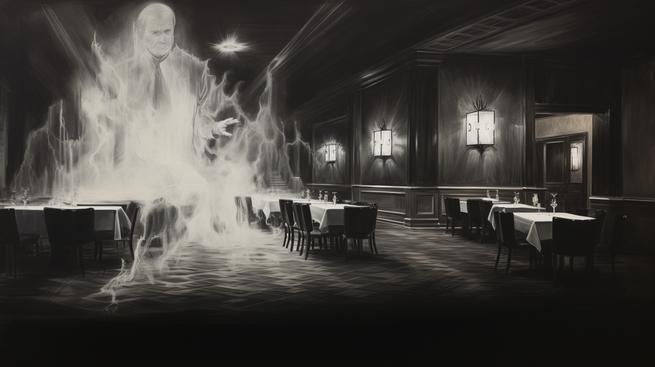
Del Frisco’s Double Eagle Steakhouse in Fort Worth, Texas, serves up more than just prime cuts of beef and top-tier seafood; it dishes out a slice of the supernatural to its patrons. Nestled in a building that dates back to 1890, the establishment once functioned as a bathhouse for the upper crust, providing a place to scrub away the travel grime of the era.
The steakhouse sits in a part of town once known as “Hell’s Half Acre,” a moniker earned from its days brimming with saloons, gambling dens, and brothels. This district, notorious for its rowdiness, was the beating heart of Fort Worth’s sin city reputation well into the 1950s.
The haunted history of Del Frisco’s is rooted in a cowardly murder from its bathhouse days. Legend has it that a gentleman, perhaps flush with gambling winnings and seeking to cleanse himself of his good fortune’s dust, met his end at the hands of a murderer driven by greed. Struck down while enjoying his bath, the victim received a bullet in the back of the head, an act that sealed his fate and marked the beginning of the building’s otherworldly reputation.
The restless spirit of the murdered man now roams the steakhouse’s halls. Clad in attire from the turn of the century, the angry murder victim is said to patrol the banquet halls and the upstairs bar, possibly in search of his treacherous assailant. Witnesses report chilling encounters, from feeling a sudden, cool breeze to hearing the echo of footsteps from a bygone era.
Despite the transformation of “Hell’s Half Acre” into a cleaned-up, tourist-friendly area, Del Frisco’s Double Eagle Steakhouse remains a hotspot for those looking to sink their teeth into history—and perhaps have an otherworldly encounter. The gentleman’s spirit, fueled by a thirst for revenge, seems anchored to the place of his untimely demise, unable to let go and move on to the afterlife.
Located at 812 Main Street in Fort Worth, Texas, Del Frisco’s is a stone’s throw away from The Martin Luther King Jr. Highway, offering both a luxurious dining experience and a brush with the past for those brave enough to visit.
I heard that at Del Frisco’s in Fort Worth, there’s a ghost of a guy who got shot in the bath long ago, and now he wanders around the place, still mad about it. Some folks say they’ve felt cold spots or heard weird footsteps when no one’s there.
Fort Worth Zoo
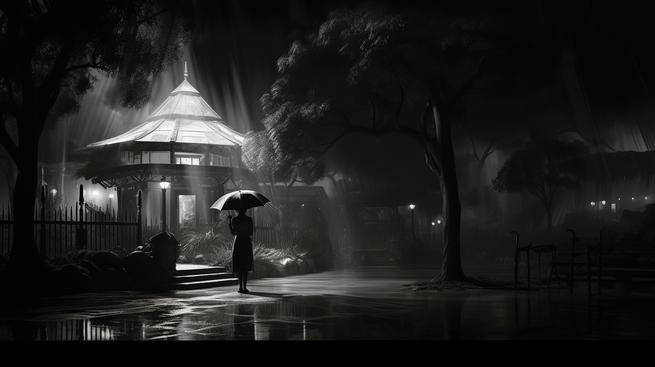
The Fort Worth Zoo, a beloved Texas institution since its inception in 1909, harbors a history that is as chilling as it is charming. Over the years, it has not only become a sanctuary for a menagerie of exotic creatures but also a dwelling for spirits that refuse to part with the living world.
The zoo’s spectral residents include two particularly notable ghosts. The first is a young man, a former zoo employee who met his untimely demise in a tragic accident. His spirit, they say, lingers on, perhaps ensuring the well-being of the animals he once tended to with care.
The second is a woman from the 19th century, known as the Woman in White. She is seen pacing in front of the zoo cafe, holding a parasol, a relic from her time. Her identity was shrouded in mystery until a deep dive into historical newspapers revealed a poignant story.
The woman is believed to be Alice Imhoff, the wife of the park gardener and the zoo’s first animal trainer. Alice had a remarkable gift for connecting with animals and became the unsung hero of the zoo’s early days. Despite her husband Fred being the official in charge, it was Alice who truly reigned over the animal kingdom there.
After vandals once wreaked havoc in the zoo, slaughtering 42 rabbits, it was Alice who was seen nursing the survivors back to health, a straw contraption in hand, her eyes brimming with tears. But as politics played its hand, the Imhoffs were ousted from their roles at the zoo. Alice’s departure from the zoo was against her will; she only wished to leave once she knew the animals would be in good hands. Her profound bond with the creatures of the zoo has led many to believe that her spirit is the one haunting the zoo grounds.
Fast forward to 75 years later, the zoo became a prized place for another animal lover, Michael Bell. A dedicated elephant handler, Michael’s life was tragically cut short when he was crushed by a 7,000-pound elephant named Sam. Michael’s passion for the gentle giants was well-known, and his death sent ripples of sorrow through the zoo community. Many think that his spirit still roams the zoo, continuing to watch over the elephants he adored.
Today, the Fort Worth Zoo stands as a testament to the love and dedication of its caretakers, both living and spectral. Hosting over a million guests annually, the zoo is in the midst of realizing a 100-million-dollar master plan under the stewardship of the non-profit Fort Worth Zoological Association.
And for those who dare, the Fort Worth Ghost Tours offer a chance to delve into the zoo’s haunted past. Should visitors catch a glimpse of an out-of-time zookeeper or the Woman in White, they are encouraged to snap a picture and share their encounter with the world. The ghosts of the Fort Worth Zoo, it seems, are here to stay, watching over their animal friends and the grounds they once called home.
I heard that the Fort Worth Zoo’s got a couple of friendly ghosts hanging around – one’s a lady from way back who cared for the animals like no other, and the other’s a zookeeper dude who loved elephants but got into a bad accident. They say these spirits still keep an eye on their animal pals, which is kinda cool and spooky at the same time.





